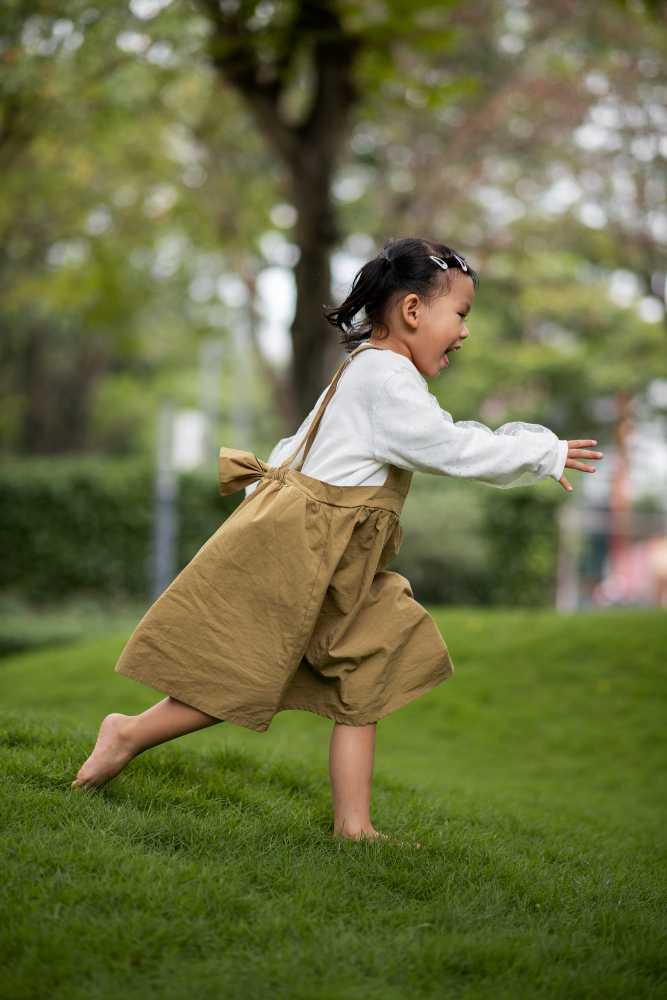When Do Babies Outgrow Contact Naps? The Complete Guide

Getting your newborn to nap can prove challenging, especially for new parents. While you can employ other available options, most parents often resort to contact napping. This essentially means sleeping beside your baby on the bed or couch. Contact napping has, over time, become a common practice for parents during the early days of their children’s life.
While contact napping certainly provides comfort and bonding for the baby and parent, you should know, when do babies outgrow contact naps? Knowing when to make a transition to independent nap time is important.
What is Contact Napping?
Before delving into when do babies outgrow contact naps, what does contact napping entail? As the name suggests, this practice involves allowing your baby to nap while holding them in proximity. Contact napping significantly differs from independent sleep, where the newborn sleeps in a crib or bassinet alone. Contact napping allows the baby to feel the comfort and warmth of the parent, which helps them fall asleep faster and sleep longer.
As a parent, you should consider contact napping for various reasons. For starters, it helps you bond with your baby. It also promotes trust and security. You can also conveniently multitask while holding your sleeping baby. Interestingly, some babies cannot sleep without physical touch. This makes contact napping essential.
Is Contact Napping Safe for Babies?
According to the American Academy of Pediatrics, contact napping is only safe if the baby is asleep and the parent is awake. The mother or parent providing skin-to-skin care should be awake and alert. Sleeping while contact napping means you won’t be attentive and can easily lose grip of your newborn. This puts your baby at risk for falls and unsafe sleeping positions.
Unfortunately, it is not uncommon for most parents to unknowingly nod off during contact napping. More than 40% of parents who responded to a survey confirmed they have once or twice fallen asleep on an armchair or sofa during contact napping. That said, you should consider the following tips to ensure safe contact napping:
- Have another person to keep watch – always ensure there is another responsible adult present in the room.
- Don’t contact nap if you are tired or under the influence.
- Practice safe positions for holding the baby – use positions like the football hold or cradle hold to ensure your child’s safety. Note that regardless of your preferred position, the baby’s face should always be visible.
- Avoid contact napping with soft beddings, such as blankets and pillows, as they increase the risk of suffocation.
Benefits of Contact Napping
Contact napping is beneficial to parents and the child in the following ways:
1. Promotes Bonding
Contact napping significantly promotes bonding between parents and newborns. The skin-to-skin contact creates a warm and intimate environment that makes the baby feel safe and secure. It also reduces stress levels.
2. Improves the Baby’s Sleep Pattern
Newborns require between 16 to 18 hours of sleep daily. Unfortunately, they always have trouble remaining asleep for long. Contact napping regulates the baby’s circadian rhythm, which directly improves sleeping patterns. The warmth from the mother’s body also has a soothing effect, making it easier for babies to sleep faster and remain asleep longer.
3. Regulates the Baby’s Body Temperature and Breathing Rate
Newborns are still developing and can’t regulate their temperatures. As such, they depend on blankets and clothing to keep warm. Contact napping is an effective way of controlling your baby’s temperature. The warmth from the parent keeps the baby warm and regulates the breathing rate.
When to Stop Contact Napping
Every parent needs to know: when do babies outgrow contact naps? While contact napping is an excellent way of bonding with your little one, you should know when it’s time to transition out of contact napping. You should start transitioning if you notice the following signs:
- Your baby is growing big or heavy to be held for extended periods.
- Your baby wakes frequently during naps
- If you need flexibility in your schedule and can’t get enough time for contact naps.
When do babies outgrow contact naps? How to Transition Your Child
Use the following tips if you think your baby is ready to transition into independent sleeping:
a) Create an Environment for Sleep Success
You should begin by creating a safe and healthy napping environment. You should prioritize the following:
- Check for safety – your baby’s sleeping surface should be labeled clearly. It should be firm and flat and shouldn’t have loose beddings or objects that can harm your baby.
- Darken the room – controlling lighting is important when creating a sleeping environment, be it for adults or babies. Darkening the room is especially beneficial for babies between 10 and 12 weeks, as they start becoming aware of their environs. Minimizing light reduces stimulation and induces sleep.
- Ascertain comfort – your baby’s room and sleeping crib should be comfortable. High or low temperatures make it difficult for your baby to fall asleep. You should also dress your baby comfortably.
- Use a sound machine – newborns are used to hearing sounds in the womb. Therefore, silence isn’t helpful in getting your baby to sleep. Sound machines block external noise from pets, doorbells, and other sources that can wake your baby.
Transitioning from contact napping to independent napping takes a toll on the parent and the baby. However, creating a conducive sleeping environment can promote faster and longer sleeping.
b) Encourage Age-Appropriate Wake Windows
Wake windows are essentially the time between naps. A wake window begins when you pick the baby from the bassinet and ends when you lay them down for the next sequential nap. Babies with long wake windows often find it difficult to fall and stay asleep because they get tired.
On the other hand, babies with short wake windows may not be tired enough to fall or stay asleep. Therefore, you should encourage an age-appropriate wake window to ensure your baby naps restfully.
c) Practice and Keep Practicing
With the sleeping room complete and the baby’s wake window identified, you should start practicing independent naps. The best way is to start by reducing the number of contact-napping every day. Aim for one or two independent naps daily and adjust accordingly.
You should also lay down your baby in their crib while awake and watch them sleep. While it may be hard for them to fall asleep, any amount of sleep in the crib alone is good progress. As they get accustomed to sleeping in the bassinet/crib, their nap time also slowly lengthens.
While at it, introduce self-soothing techniques that can help the baby fall asleep by themselves. Babies learn how to self-soothe by sucking their fingers or a pacifier during naptime.
When Do Babies Outgrow Contact Naps? The Bottom Line
That said, there’s no universal answer as to when babies outgrow contact naps. Some newborns sleep better and are comfortable in their crib, while others are snuggly and require a personal touch to nap. However, regardless of how much your toddler enjoys contact napping, you should know when to stop them.





